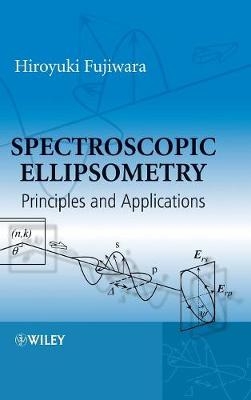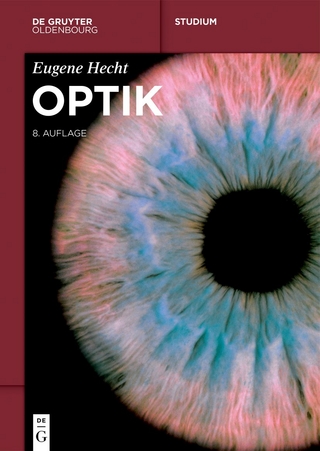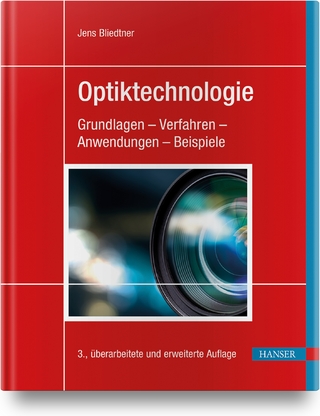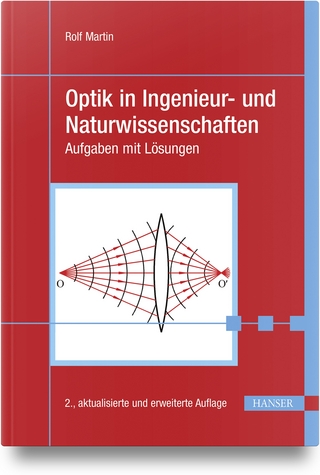
Spectroscopic Ellipsometry
John Wiley & Sons Inc (Verlag)
978-0-470-01608-4 (ISBN)
Dr Hiroyuki Fujiwara is based at the National Institute of Advanced Industrial Science and Technology, Ibaraki, Japan. He received his PhD at the Tokyo Institute of Technology in 1996 and carried out post-doctoral research with Professor R.W. Collins at Penn State University. From 1998 to present he has been working as a senior research scientist at the Research Center for Photovoltaics at NIAIST. He received the 'Most Promising Young Scientist Award' from the Japan Society of Applied Physics and the 'Young Researcher Award' at the World Conference on Photovoltaic Energy Conversion in 2003.
Foreword. Preface.
Acknowledgments.
1 Introduction to Spectroscopic Ellipsometry.
1.1 Features of Spectroscopic Ellipsometry.
1.2 Applications of Spectroscopic Ellipsometry.
1.3 Data Analysis.
1.4 History of Development.
1.5 Future Prospects.
References.
2 Principles of Optics.
2.1 Propagation of Light.
2.2 Dielectrics.
2.3 Reflection and Transmission of Light.
2.4 Optical Interference.
References.
3 Polarization of Light.
3.1 Representation of Polarized Light.
3.2 Optical Elements.
3.3 Jones Matrix.
3.4 Stokes Parameters.
References.
4 Principles of Spectroscopic Ellipsometry.
4.1 Principles of Ellipsometry Measurement.
4.2 Ellipsometry Measurement.
4.3 Instrumentation for Ellipsometry.
4.4 Precision and Error of Measurement.
References.
5 Data Analysis.
5.1 Interpretation of (Ψ, Δ).
5.2 Dielectric Function Models.
5.3 Effective Medium Approximation.
5.4 Optical Models.
5.5 Data Analysis Procedure.
References.
6 Ellipsometry of Anisotropic Materials.
6.1 Reflection and Transmission of Light by Anisotropic Materials.
6.2 Fresnel Equations for Anisotropic Materials.
6.3 4×4 Matrix Method.
6.4 Interpretation of (Ψ, Δ) for Anisotropic Materials.
6.5 Measurement and Data Analysis of Anisotropic Materials.
References.
7 Data Analysis Examples.
7.1 Insulators.
7.2 Semiconductors.
7.3 Metals/Semiconductors.
7.4 Organic Materials/Biomaterials.
7.5 Anisotropic Materials.
References.
8 Real-Time Monitoring by Spectroscopic Ellipsometry.
8.1 Data Analysis in Real-Time Monitoring.
8.2 Observation of Thin-Film Growth by Real-Time Monitoring.
8.3 Process Control by Real-Time Monitoring.
References.
Appendices.
1 Trigonometric Functions.
2 Definitions of Optical Constants.
3 Maxwell’s Equations for Conductors.
4 Jones–Mueller Matrix Conversion.
5 Kramers–Kronig Relations.
Index.
| Erscheint lt. Verlag | 1.3.2007 |
|---|---|
| Verlagsort | New York |
| Sprache | englisch |
| Maße | 160 x 235 mm |
| Gewicht | 765 g |
| Themenwelt | Naturwissenschaften ► Physik / Astronomie ► Optik |
| ISBN-10 | 0-470-01608-6 / 0470016086 |
| ISBN-13 | 978-0-470-01608-4 / 9780470016084 |
| Zustand | Neuware |
| Informationen gemäß Produktsicherheitsverordnung (GPSR) | |
| Haben Sie eine Frage zum Produkt? |
aus dem Bereich


